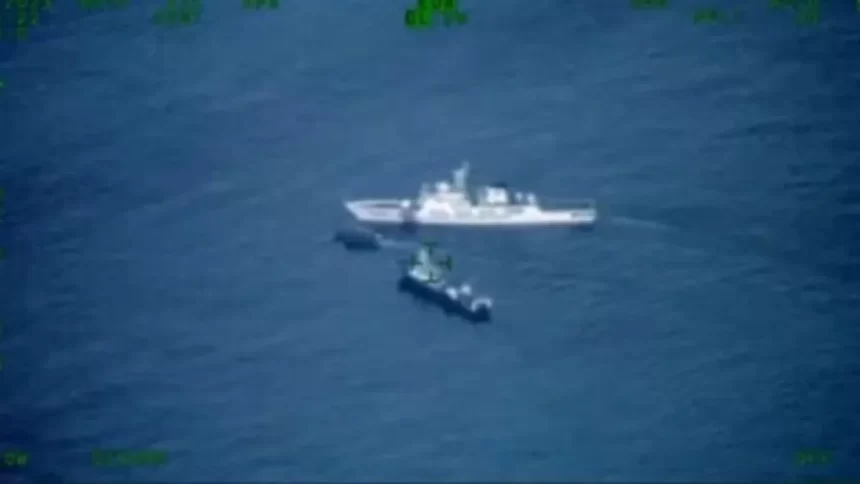The South China Sea dispute has once again flared up, drawing global attention as the United States condemned China for interfering in the Philippines’ maritime operations and undermining regional stability. The incident, marked by a collision between a Philippine boat and a Chinese Coast Guard ship near a contested reef, underscores the ongoing tensions in this geopolitically sensitive region.
On a resupply mission to Second Thomas Shoal, where Filipino soldiers are stationed in a deliberately grounded navy vessel, a Philippine boat collided with a Chinese Coast Guard ship. This marks the second consecutive day of confrontations between the two nations, escalating an already complex situation in the disputed South China Sea.
The United States, through its State Department spokesperson Matthew Miller, issued a strong condemnation of China’s actions, describing them as “dangerous and destabilizing conduct.” The statement highlighted the significance of obstructing supply lines to a longstanding outpost and interfering with lawful Philippine maritime operations, emphasizing the detrimental impact on regional stability.
China’s expansive territorial claims in the South China Sea, including waters and islands near its neighbors’ shores, have been a source of longstanding tension. Notably, China has disregarded the 2016 international tribunal ruling that rejected the legal basis of its assertions. The defiance of such rulings has further heightened concerns about China’s adherence to international law and its commitment to resolving disputes through diplomatic means.
More About The Interference:
The United States has consistently urged China to comply with the arbitral ruling and respect the international order. The collision near the contested reef serves as a stark reminder of the ongoing challenges in the South China Sea and the need for diplomatic solutions to prevent further escalation.
The South China Sea is a critical maritime region with strategic importance for several nations. The escalation of tensions not only affects the immediate parties involved but also poses a risk to regional stability. The interference in maritime operations and the collision near the Second Thomas Shoal raise questions about the potential for miscalculations and the need for all stakeholders to exercise restraint.
The recent collision between a Philippine boat and a Chinese Coast Guard ship in the South China Sea underscores the fragility of the situation in this contested region. As the United States condemns China’s actions and calls for compliance with international rulings, the international community watches closely, hoping for a diplomatic resolution to prevent further destabilization. The need for dialogue and adherence to established legal frameworks remains crucial for fostering stability and preventing the escalation of tensions in the South China Sea.
